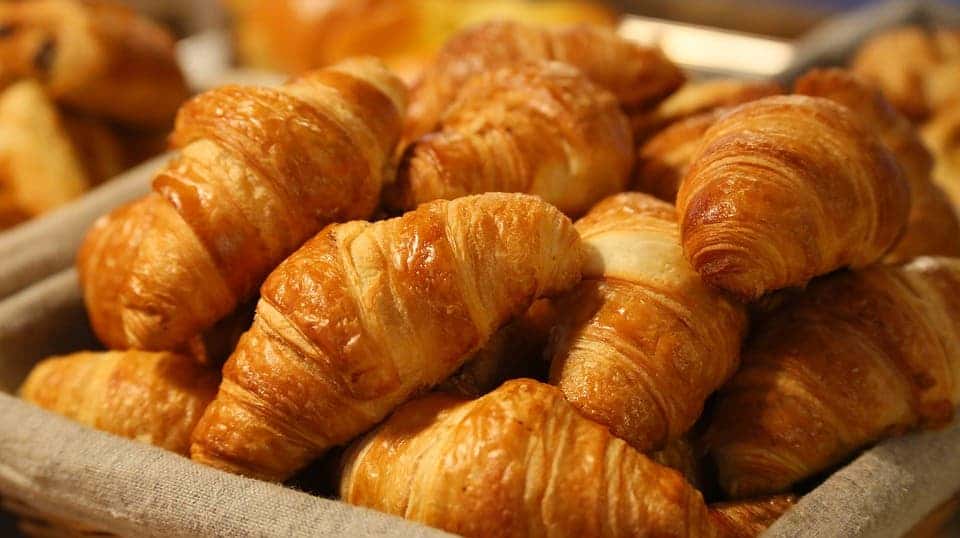The secret ingredient? A combo of white wine & lemon.

Picture a pastry right as it’s taken out of the oven — it’s hot, smells amazing, and is probably delicious. But if you’ve paid close attention to very fresh pastry, you may have noticed another detail: they have a certain golden brown color, which makes them all the more alluring.
This lovely color disappears after a while though, which reduces both the appeal and the value of the pastry product. Now, scientists have found a natural way to prevent discoloration during dough storage, keeping the pastries nice and golden.
The combo is a cocktail of white wine and lemon.
Pastries (as well as bread, cake, potatoes, coffee, and many other products) can brown through a process called enzymatic browning, lead author Peter Fischer from ETH Zurich says. It’s the same process that causes dark spots on bananas or the browning of cut apples. In pastry, the browning is related to the aleuron layer of the wheat kernel. Aleuron is a type of protein stored as granules in the cells of plant seeds.
A white dough that changes hue during storage, however, can negatively affect the overall appearance of the final baked product. Since many commercial bakers prepare the dough days or weeks ahead of time, this is a widespread problem in the industry.
Commercial additives can suppress this reaction, but more and more consumers are requesting only natural ingredients in their foods, so Fischer and colleagues set out to look for alternatives to preserve pastries. After trying quite a few substances, they found a natural and sustainable way to inhibit enzymatic browning in pastry dough.
“The combination of white wine and lemons was a result of both chemical intuition, for our co-author Simon Kuster, and a lot of trial and error,” Fischer told ZME Science. But it has to be wine — not other grape-based juices. “Grape juice does not perform as well as white wine, so secondary products (alcohol and the magic spin) might be the match-making ingredients.”
While this could make a significant difference for the baking industry, you can implement this in your own baking. You don’t have to be too strict about the quantities, researchers say — as long as it tastes good and there’s not too much, you can experiment until you get the desired effects
“Quantities we basically tested until taste and content exceed limits. I guess it is up to the product and the taste buds of the consumers,” Fischer concludes.
The study was published in the Journal of Agricultural and Food Chemistry.
Was this helpful?



